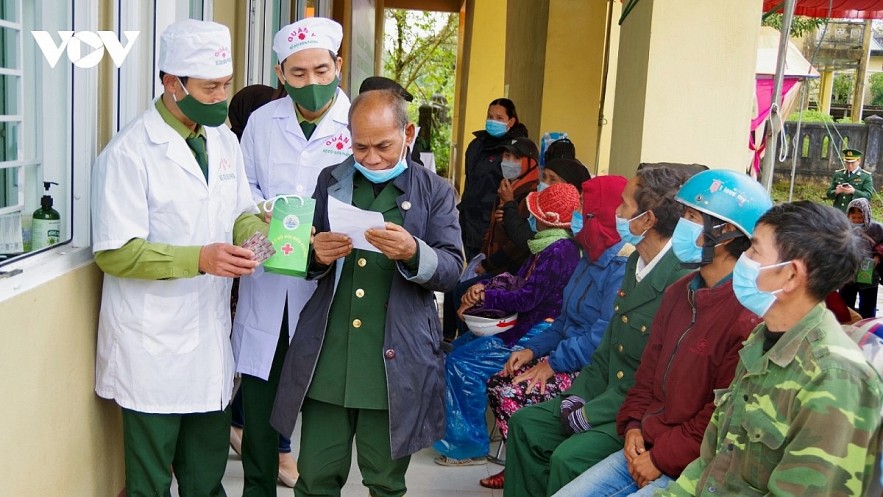
|
| The World Health Organization (WHO) commends Vietnam’s progress in healthcare, noting significant improvements in life expectancy and a decline in vaccine-preventable diseases. |
Vietnam has made remarkable strides in enhancing its people’s lives and the quality of its healthcare system over the past decades. This is evident in the words of WHO Director-General Tedros Adhanom Ghebreyesus, who acknowledged the country’s achievements.
“Vietnam has made significant strides in improving healthcare and the well-being of its citizens. Life expectancy has increased by an impressive 15 years, and vaccine-preventable diseases have seen a notable decrease. The expansion of health insurance coverage further propels Vietnam towards its goal of providing universal healthcare for all,” Tedros remarked.
Vietnam’s commitment to eradicating poverty, strengthening social security, and enhancing medical care for its people underscores its dedication to upholding human rights.
Life Expectancy in Vietnam Rises by 15 Years
Vietnam is recognized as one of the fastest-growing nations in terms of the Human Development Index (HDI). In just ten years, the country has witnessed a remarkable 46% increase in its HDI, placing it among the highest-growth countries globally.
According to the latest Human Development Report by the UNDP, Vietnam’s HDI ranking has climbed from 115 to 107, positioning the country in the group with a high human development index.
Effective family planning has played a pivotal role in Vietnam’s progress, with the birth rate dropping from 6.4 children per woman to 2.09 in 2006, a level sustained to the present day. Vietnam proudly stands among six countries worldwide that have achieved Millennium Development Goal 5, promoting gender equality and empowering women and girls as part of the United Nations Sustainable Development Goals.
Tedros further highlighted Vietnam’s ability to maintain economic growth during the challenging years of the Covid-19 pandemic, a feat not commonly achieved by developing countries.
“Vietnam’s progress in improving healthcare and the quality of life for its citizens is commendable,” Tedros asserted. “The country has witnessed a 15-year increase in life expectancy, coupled with a significant reduction in vaccine-preventable diseases. Vietnam’s expansion of health insurance coverage brings the nation closer to its aspiration of providing universal healthcare.”
Data from the General Statistics Office underscores this progress, showing that in 2023, the average life expectancy of Vietnamese citizens was 73.7 years, with men at 71.1 years and women at 76.5 years.
Vietnam’s death rate remains low, and the increase in life expectancy can be attributed to advancements in medical development and improved access to healthcare.

|
| Vietnam’s Deputy Prime Minister, Tran Hong Ha, meets with Saia Ma’u Piukala, WHO Regional Director for the Western Pacific, to discuss the country’s progress in public healthcare. |
Upholding the Right to Public Healthcare
Vietnam firmly believes in the importance of the right to public healthcare as a fundamental human right and the foundation for the exercise of other human rights. The realization of this right is intertwined with other essential human rights, including the right to life, food, housing, employment, education, privacy protection, and access to information.
The Vietnamese government actively promotes the implementation of social security policies and works to expand the reach of social benefits to a wider portion of the population.
Social assistance programs, projects, and policies are effectively carried out, with a particular focus on supporting and improving the lives of the elderly, individuals with disabilities, and children facing special circumstances.
In 2020, the number of people enrolled in health insurance reached 88.04 million, representing 90.85% of the population. This number grew further in 2021, with 88.837 million people, or 91.01% of the population, having health insurance, surpassing the target set by the Government in Resolution 01/NQ-CP dated January 1, 2019.
The country also witnessed a swift restoration of healthcare services, and the preventive health system was strengthened to foster self-reliance and adaptability. By the end of 2023, health insurance coverage reached approximately 94% of the Vietnamese population, demonstrating the resilience and effectiveness of the social security system and social policies in supporting individuals facing challenges posed by the Covid-19 pandemic.
Ha Long Carnival opens in Quang Ninh
The Ha Long Carnival, a highlight of the Ha Long – Quang Ninh tourism week 2019, opened in Bai Chay and Hon Gai tourism area in the northern province of Quang Ninh on April 28.








